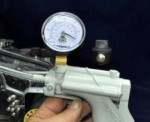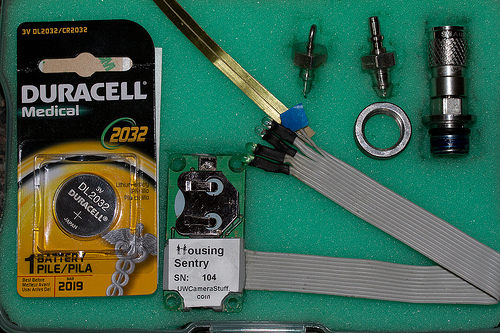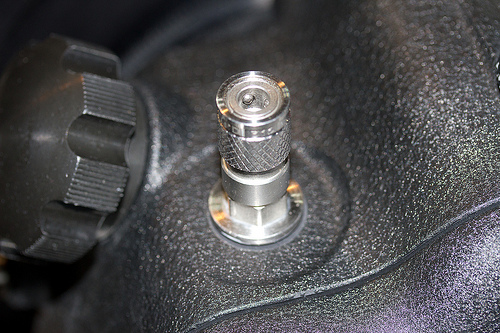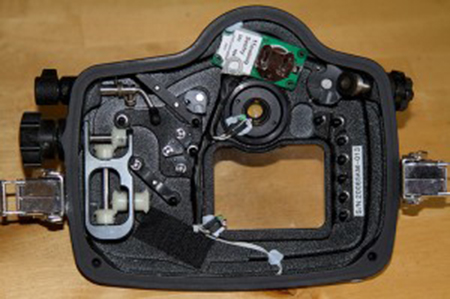Review: UnderWater Camera Stuff Housing Sentry

Product Review: UnderWater Camera Stuff Housing Sentry.
By Damien Siviero.
You’ve just sealed up housing with camera inside – what next? Conventional wisdom would suggest that you either rely on a dunk test in fresh water or simply hope that no seal has been compromised. The dunk test - a procedure that uses water entering a confined space filled with expensive electronics as an alert mechanism, not my idea of common sense. Then there is the hopeful approach, whereby you assume everything is okay either because you’re flawless or your housing was engineered by god and can never fail. Again, not my idea of fun when I have thousands invested in my camera gear.
Over recent years I have seen the housing integrity solutions delivered by both Gates/Hugyfot and looked on with interest. Recently I discovered the Housing Sentry by UW Camera Stuff, which is third party solution that can be installed in almost any housing (with various levels of ease). All these systems work on the same principle, which is to create a vacuum inside the housing that simulates being under water. If the vacuum holds, it confirms that o-rings (particularly the main bulkhead and port o-rings) are seated properly and won’t result in a flood.
The Housing Sentry is really a two part solution which includes the electronics and vacuum kit. The electronics comprise of a little board and wired LEDs that provide the real-time status of seal integrity. You install this into the housing back like most leak detectors, however the LEDs can provide notification to the rear display window as well as through the viewfinder. The vacuum kit includes the bulkhead coupling and vacuum pump used to pull the negative pressure which enables the integrity check.
What’s in the box:
1 x Female coupling and locking nut.
1 x Male coupling.
1 x Coupling Plug.
1 x Electronics (includes water leak detector).
1 x Battery 2032.
1 x Plastic box with internal padding.
1 x MityVac Hand Pump or Electronic Pump (both include tubing).

From time of order, the components arrived promptly and were shipped in good condition. RRP $799+shipping.
Installation:
The Housing Sentry (HS) comes in various configurations which can be chosen depending on your housing type. My version of the HS was made to drop into the spare strobe/accessory port on my Aquatica housing. As I don’t use the hydrophone, it was merely a matter of removing the blank port and inserting the o-ring sealed female coupling. A threaded stem and locking nut provides a robust seal with zero movement.

The electronics took a little longer to install, but were similarly pretty easy to do. Firstly I removed the leak detector as it would now be redundant. The HS board is pretty small but slightly bigger than the Aquatica leak detector and so wouldn’t fit into the area provided by the housing for that. Instead I found a home for the board at the top of the housing back (just above the viewfinder). The electronics board appears well made and PCB board back is also potted, which I liked as it doesn’t leave the components exposed to salt air and spray.
Four wires run off the board to two red and two green LEDs. It was relatively easy to route these to the rear display window and viewfinder, whilst maintaining a tidy housing back.
The coupling plug comes attached to a stainless steel ball chain so that it can be attached to the housing at all times. This ensures it can’t be lost and hopefully aids in the process of keeping the plug in the coupling when pump is not in use (critical for deep dives). I opted to remove the SS ball chain and used 2-3” of Kevlar cord instead, as I felt it was easier to attach to the top of my left hand grip this way.

Housing Assembly:
Using the system is pretty easy; you simply assemble the housing as usual, connect the vacuum pump tube to the female coupling and pull the negative pressure. The red LED status light turns on, blinks and eventually turns off when green LED comes on to indicate the appropriate vacuum has been achieved. You then remove the pump and insert coupling plug. Whilst the green LED is on, your housing does not have a leak.
By default, the Housing Sentry comes with either the MityVac hand pump or an electronic pump. In an attempt to follow the KISS principle, I opted for the hand pump. Whilst it’s effective and bombproof, it does require some 120 squeezes of the trigger to achieve the vacuum. I quickly found this gets tiresome and promptly ordered myself the rechargeable electronic pump for $30. In contrast, the electronic pump takes about 20 seconds to achieve the desired vacuum. Given the relatively low cost, I believe having both the hand and electronic pump provides the best of both worlds as I can imagine a scenario where the electronic pumps runs out of batteries at the worst time (although I’ve not hit that yet).
Housing Disassembly:
Disassembling the housing is merely a matter of venting the vacuum so that you can open the housing back or change a port. To do this, simply remove the coupling plug and insert the vacuum pump hose.
Underwater:
I did about 10 dives with the HS before writing this review. Each was without incident and depths ranged from 6-80m. Whilst underwater I only even saw the green LED blink slowly to confirm the seal integrity. In bright daylight conditions the green LED is a little harder to see, but is still visible.
Conclusion:
The Housing Sentry provides a much desired confirmation of seal integrity prior to entering the water. It does so with relative ease, however requires the user to be diligent in its operation. Specifically, if left unplugged the female coupling (used to pull the vacuum) will leak at depths greater than 56m. This happens as a result of high ambient water pressure pushing on a ping and spring within the coupling. Although for most diver 56m provides an element fault tolerance, technical divers must always ensure the plug is connected. After discussions with UW Camera Stuff, they’re currently looking into changing the spring within the female coupling so that it can handle greater pressure and provide a safeguard should the plug not be inserted on deep dives. Overall I consider the risks to be manageable and the positives outweigh the negatives.
Pros:
- Provides real-time confirmation of housing seal integrity (in and out of water).
- Vacuum locks ports and housing back in place.
- Electronics power down automatically at ambient pressure.
- High quality stainless steel components.
Cons:
- Housing will leak past 56m if coupling blank is left out.
- Additional steps to assemble housing.
- Additional equipment (i.e. vacuum pump).
- Requires hole to be drilled in housing if no spare port is available.
For more information, see UnderWater Camera Stuff.
About the author: Damien Siviero is a Sydney based diver and photographer, with a passion for underwater exploration and adventure. He has over 17 years diving experience and is an accomplished technical diver and photographer/videographer, incorporating advances in SLR and rebreather technologies. His discovery footage of the MV Fairwind project has been broadcast on Australian and International television. For full details and his bio, please visit his website.